“If scrapbooks can be distilled to one overarching interpretive theme, it is that of rupture.”
“What could be more emblematic of the fractured narratives of modernity than scrapbooks?”
“[An] excess of fragments that burst the bindings and bulge the pages.”
“How then do we read these fragments as cultural artifacts?”1
Newspaper clippings were frequently pasted into scrapbooks, and sometimes, as in the case of the scrapbook shown here, compose the entirety of the scrapbook’s contents:
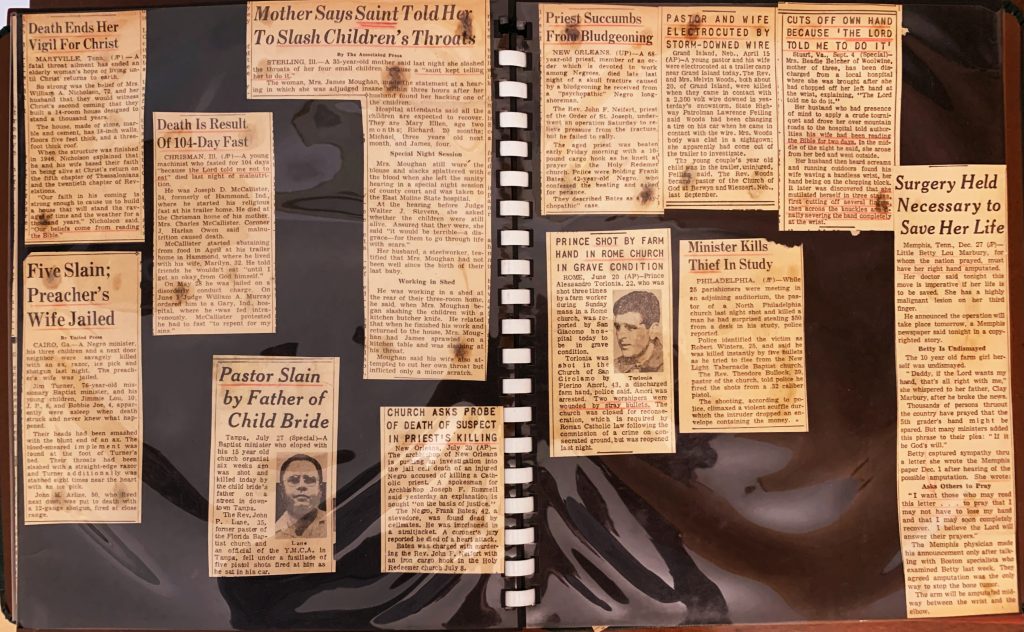
“How then do we read these fragments as cultural artifacts?” As a library worker, I would answer that we should first try to trace each fragment back to its source. Like many scrapbookers, the creator of this scrapbook was not overly-scrupulous when it came to recording or retaining bibliographic information. Patrons sometimes contact us for assistance with precisely this kind of research: identifying the newspaper issue from which a clipping was taken. Removed from the newspaper in which it originally appeared, each article lacks information that the scrapbooker might have considered obvious, such as the year of publication (!), to say nothing of other contextualizing information that could help a researcher better understand the event the article purports to document (the so-called “first draft of history”).
As a case in point, I carefully removed from its mylar one of the articles, and scanned it on a flatbed (the image above is a snapshot taken with my phone).
What then we can learn about this article, about the event it describes, and about the journalism it embodies?

It’s quite an article, piled-high with scattered limbs and fragments within fragments, a multi-layered funeral cake oozing a rich, gore ganache. But to begin with, I only know for sure where this event occurred because I recognize the names of the towns, but if I didn’t recognize those place names then I might not even know the state where it happened. The fact (or what the article represents as a fact) that the train was an Illinois Central might suggest the state is Illinois, but railroads can be tricky: the Illinois Central had track in at least half a dozen states. Still, with the three cities named in the article, a quick web search would answer this question, and Illinois it is. I still cannot identify the source newspaper (yet?), but I see that the article was reprinted from another newspaper, the La Salle Post.
I imagine that, in the La Salle Post, this article might have been front page news, and that there might have been follow-up articles on the findings of any investigation into the accident, possibly a report on the funeral, or an obituary for Jasiek. Unfortunately, only three extant issues of the La Salle Post, the earliest issue from 1911, so that the clipping we have here, this fragment of a fragment, becomes more significant: evidence that a newspaper called the La Salle Post reported on, and published at least one article about, this grizzly accident.
Actually (warning: detour ahead), what really strikes me about this article is the grotesque abundance of detail with which the victim’s body is described. And yet it’s not the sensationalism that Andie Tucher describes as “baroque prose.”2 The journalist writes with a dissonant matter-of-factness, almost an innocence—a pre-moral innocence that takes the world as it is found, with no set of decorous expressions for registering strong feeling. An oddly impassive tone countervails the appalling detail. The reporter documents the exact disposition of the victim’s remains with a forensic precision that reads almost like a coroner’s report: whereas the head and first limb were lying between the rails “some rods to the north of the company store,” the rest of the body was outside the rails “within a hundred feet from where the head and a limb had been found.” The journalist does register emotion, but it reads like prompts or stage directions—it has the verbal economy of a newspaper comic strip:
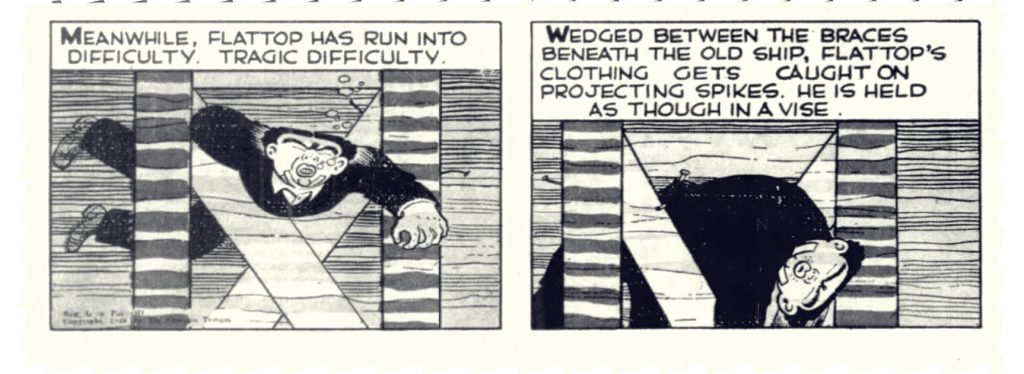
The article’s manner of representing Jasiek’s bodily destruction fits no genre recognizable to me: newspaper article, coroner’s report, comic strip. Maybe even a cartoon, with the inconsequential violence of a Bugs Bunny short, body parts smashed and severed and then just as easily mended, all qualities that caused me to imagine the scene, the arrangement of the body parts, with the pictorial vocabulary of a comic strip, right down to the newspaper halftones:
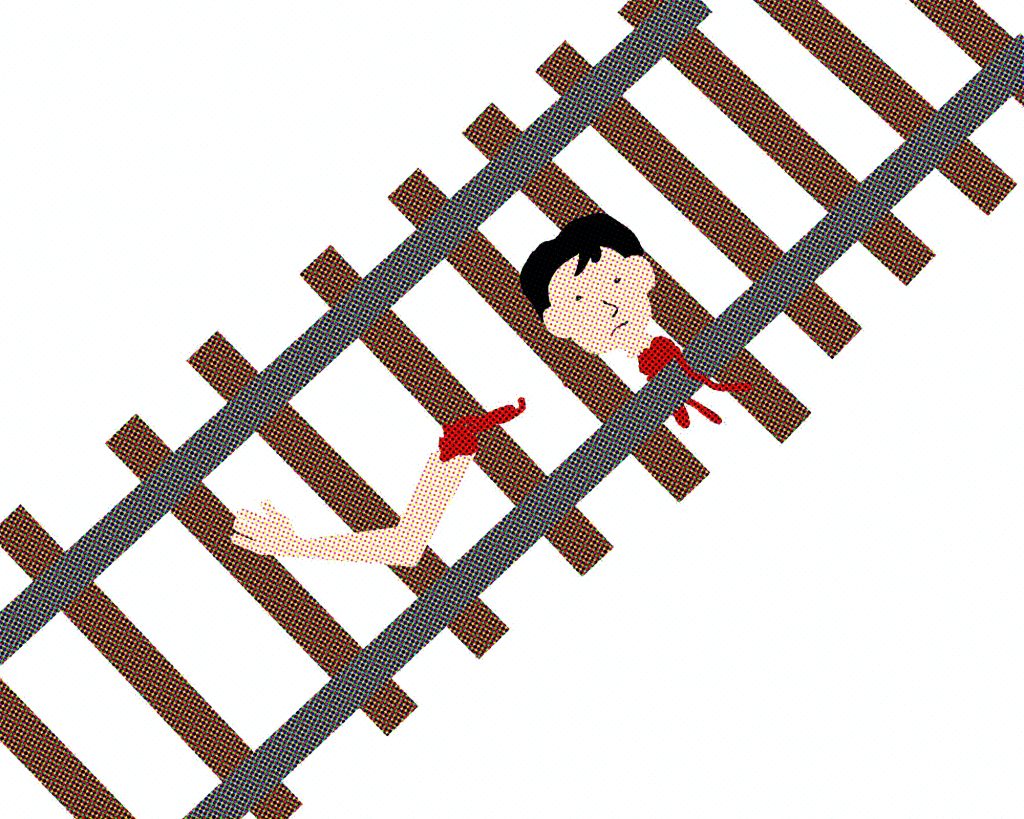
I was also puzzled by the behavior of the excursionists, who lead the way in the reconnaissance, with the railway officials merely following. What they find is practically a bonus event on their Fourth of July excursion. Certainly there is the well-known phenomenon of people not being able to avert their eyes from a catastrophe, but there’s something unusually orderly here, like high schoolers on a field trip, or tourists in a museum: “Now realizing what had happened”—this participial phrase gives a strange slow-motion effect to a process of induction that ought to have been instantaneous: perceive severed head and severed limb on railroad tracks, conclude someone has been hit by a train. “Now realizing what had happened, the party of some dozen persons proceeded farther up the track […] the party came upon the remainder of the body, horribly mangled, lying outside the track, the clothes of the young man torn into shreds.” The reporting feels simultaneously too much (the abundance of detail) and too little (the dispassionate tone). The excursionists do not seem particularly distressed.
Possibly this article is evidence that words like “gruesome” and “horribly” have, in our time, lost their charge, through overuse or the tendency to hyperbole, a dulling of the senses, and consequent inability to be shocked. In spoken English today, a pleasing dessert must be “awesome” or “amazing,” a boring lecture “horrible,” or a Tupperware of moldy food “gruesome.” Do we, like a far-gone drug addict, require ever more intense language to elicit the same response as this journalist could reasonably expect to elicit with a few well-chosen words? What feels like restrained language to me might have been experienced by its first readers as truly horrific.
Wanting to develop a less caricatured idea of what happened to Jasiek, but recognizing that this article very likely represented the bulk of his presence in the historical record, I decided to look for any information at all that might tell me more about his death, beginning, hopefully, with the date. The Decennial Census enumeration forms in Heritage Quest helped me establish the date: Saturday, July 4, 1908. He was 14 years old when entered into the population schedule on June 16, 1900: for him to be 22 when he died, the accident must have occurred in either 1908 or 1909, and 1908 was the year when the Fourth of July fell on a Saturday.
The “Bent Company store” referenced in the article would have been the company store of the Oglesby Coal Company, owned by T.T. Bent, which I located on a 1911 Sanborn Fire Insurance Company map for Oglesby:

I’ve marked the location of the Bent company store with a red arrow and box; the general location of the accident I’ve marked with a red oval.
The Bent mine (officially, the Oglesby Coal Company Mine) was directly to the north of the accident, and then beyond the Bent mine was an even larger minefield owned by the La Salle County Carbon Coal Company; to the east were two minefields owned by the Illinois Zinc Company. Coal mines scabbed the region. The Bent mine alone was capable of producing one thousand tons of coal a day, and between the years 1870 and 1919, over 4.5 million tons of dirty, bituminous coal were mined from that single shaft.3 The region’s vast coal resources fueled the industries that had located nearby: zinc, sulfuric acid, brick, limestone, cement (made in part from limestone), dolomite, clay, sand, and gravel. Much of the industry was extractive.
Before his death, Jasiek would have been walking through a sort of industrialized hell, though one with which he’d have been quite familiar. Below is a detail from a map in the Directory of Coal Mines in Illinois showing Jasiek’s world (ignore the freeways!), with his home, workplace, and place of death marked by purple arrows. As you can see, his life was almost literally circumscribed by coal mines.

According to the 1905/1906 McCoy’s La Salle and Peru City Directory (available in Heritage Quest, a fantastic source for difficult-to-find city directories), Jasiek worked for the German-American Portland Cement Works, located at the confluence of the Little Vermillion River and the Illinois River (actually, where the Little Vermillion River crosses the Illinois and Michigan Canal via aqueduct).
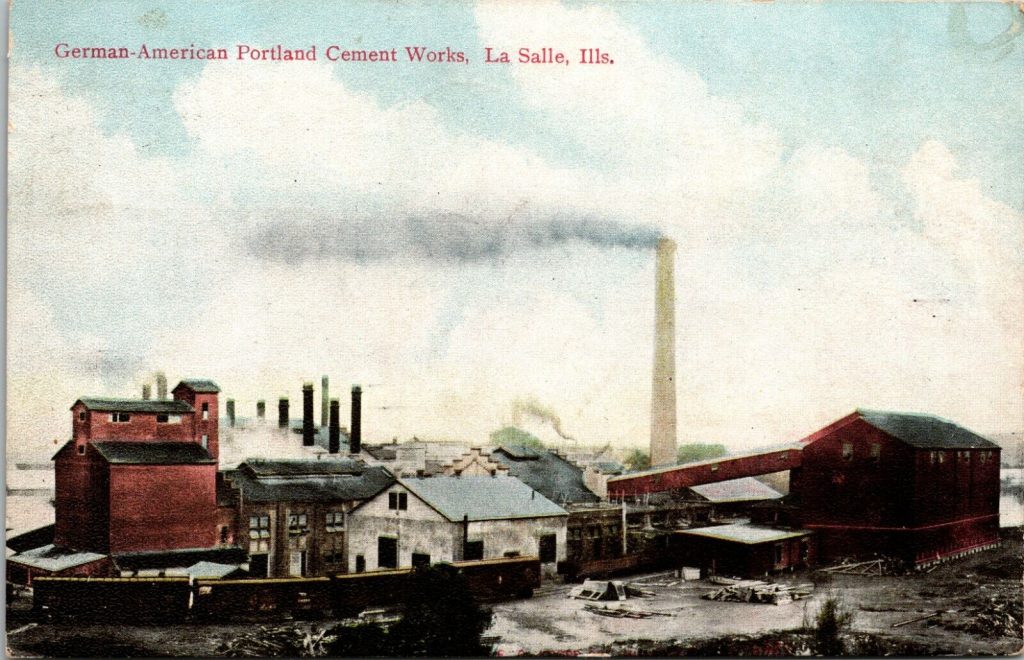
By this point I realized there had not been much method to my investigations, and that I had overlooked an obvious source: newspapers. Did our library have any newspapers from La Salle, Oglesby, or Streator, the towns I thought most likely to have had newspapers with reports of the accident? We did not have any 1908 newspapers from La Salle or Oglesby, but I was able to access 1908 issues of the weekly Streator Free Press, where I found an article that casts the accident in a strikingly different light, even calling into question whether Jasiek’s death was an accident at all:
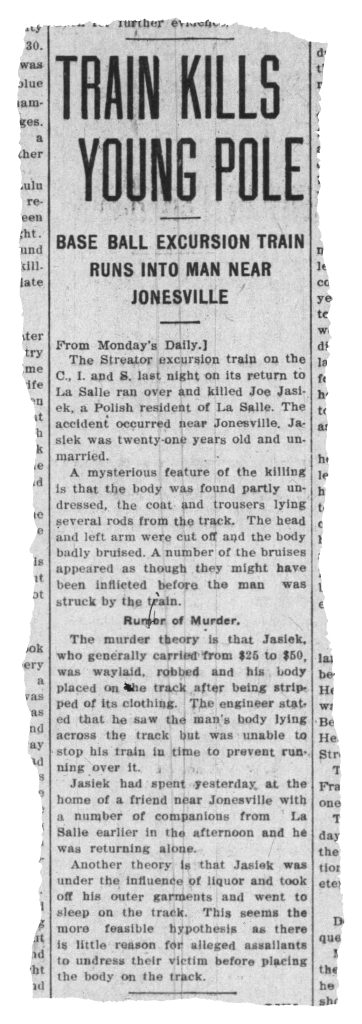
This article, considered alongside the first, both documenting the exact same event, raised some red flags about the value of newspapers as primary sources. The reporting in this second article varies in several significant details. To begin with, the first article gives Jasiek’s age as 22, the second as 21. (He would have been 22.) Then it states that the deadly excursion train was a C.I.&S. (Chicago, Indiana, and Southern), whereas the first article identifies the train as an Illinois Central (abbreviated on the Sanborn map above as ICRR). A more intriguing discrepancy, to me, is the engineer’s account of what he saw: in the first article, he “had seen no one on the track at any time.” In the second article, he “saw the man’s body lying across the track but was unable to stop his train in time to prevent running over it.”
One of the details in the first article that had seemed, for some reason, somewhat extra was the description of his clothing, “the clothes of the young man torn into shreds.” It felt like a detail that readers could be expected to infer: having been hit by a train, his clothing would certainly be in bad shape. In the Streator Free Press article, however, the clothing assumes a whole different significance: “A mysterious feature of the killing is that the body was found partly undressed, the coat and the trousers lying several rods from the track.” Suddenly the state of the clothing becomes very important indeed. According to this second article, the clothing was not “torn into shreds” at all, but had been, at some point, removed from Jasiek’s body before the train dismembered him. I almost imagine the coat and trousers carefully folded and lying beside the tracks.
Much of the new or differing information seemingly supports the theory, raised in the second article, that Jasiek had been murdered before he was hit by the train. Astonishingly, however, after considering the evidence, the Streator Free Press reporter comes to the opposite conclusion, finding more plausible the theory that Jasiek was intoxicated, and had removed his own clothing before lying down on the train tracks for a (surely not very comfortable) rest. Even this vale of mines must have offered better places for a nap than the railroad tracks.
The more I considered these contradictions, the more I noticed something in the Streator Free Press article that was not really a contradiction at all, but something entirely new. In the first article, Jasiek is practically a cipher, as I noted in my own reader response: the first article tells us very little about Jasiek as a person. The second article goes quite a bit further in this respect, but in so doing makes him a more doubtful character. The lead paragraph, typically the place where a journalist packs all the most important information, concludes with the sentence “Jasiek was twenty-one years old and unmarried.” Perhaps I am falling into the trap of presentism, but I cannot understand how his marital status could have been so important as to earn itself this prized position in the lead paragraph. Was his death more lamentable because he was unmarried? Less lamentable? Did the fact that he was 21 and unmarried tell contemporary readers something about his character? Perhaps a failure or refusal to accept the responsibilities of adulthood?
The Streator Free Press article also speculates that he may have been carrying a large quantity of cash, perhaps up to $50, and that he had a reputation for doing so. In 1908, $50 would have been quite a lot of money, especially for a young laborer, enough to purchase any of the following:
- Ten gallons of pure rye whiskey
- 100 chambray fine finish work shirts from Sears
- Five typewriters
- 25 iron beds from Sears
- Five oak dining room tables
- Three bicycles from Sears
- Four double-barrel shotguns from Sears
- 10,250 cigars from Sears.4
Contemporary readers must surely have been intended to understand that there was something dubious, or at least improvident, about a person known to carry that much cash. (Oughtn’t he have been putting that money into a savings account, a nest egg for his future wife and family?) Possibly there’s also the suggestion that Jasiek was a braggart? How else would it have been generally known that he regularly carried large amounts of cash?
It was, however, in the concluding paragraph that I finally heard what today we would call a dog whistle: “Another theory is that Jasiek was under the influence of liquor.” Of course! Combined with the title of the article (“Train Kills Young Pole”) and all the little details hinting at questionable life choices, the liquor is the finishing brushstroke that completes the stereotype (if I may mix a metaphor) regularly attributed to immigrants at the time (Germans, then Irish, then Southern and Eastern Europeans).
Nativism, Temperance, and anti-Catholicism (Jasiek was Roman Catholic) had frequently aligned throughout the nation’s history: the Know Nothing Party of the mid-nineteenth century represented an early intensification of these alignments. After 1900 these ideologies aligned once again as Prohibitionists feared an increase in the foreign-born population, and consequent redrawing of the electoral map after each Decennial Census, would forever dash their hopes of imposing prohibition through Constitutional Amendment. The Ku Klux Klan also advocated Prohibition, and after passage became its vigilante enforcer, which they added to their portfolio of nativism, anti-Catholicism, and other forms of virulent bigotry.5
Looking at this article on the page from which I tore it, I see that five of the articles on the page are about immigrants or migrants: “a Syrian youth,” “an Italian laborer,” “a Polish resident of La Salle,” “a colored man with gun” (Strickland had moved to Streator from Georgia), and “a native of Ireland.” Each of these articles would surely have reflected unfavorably on its subject.
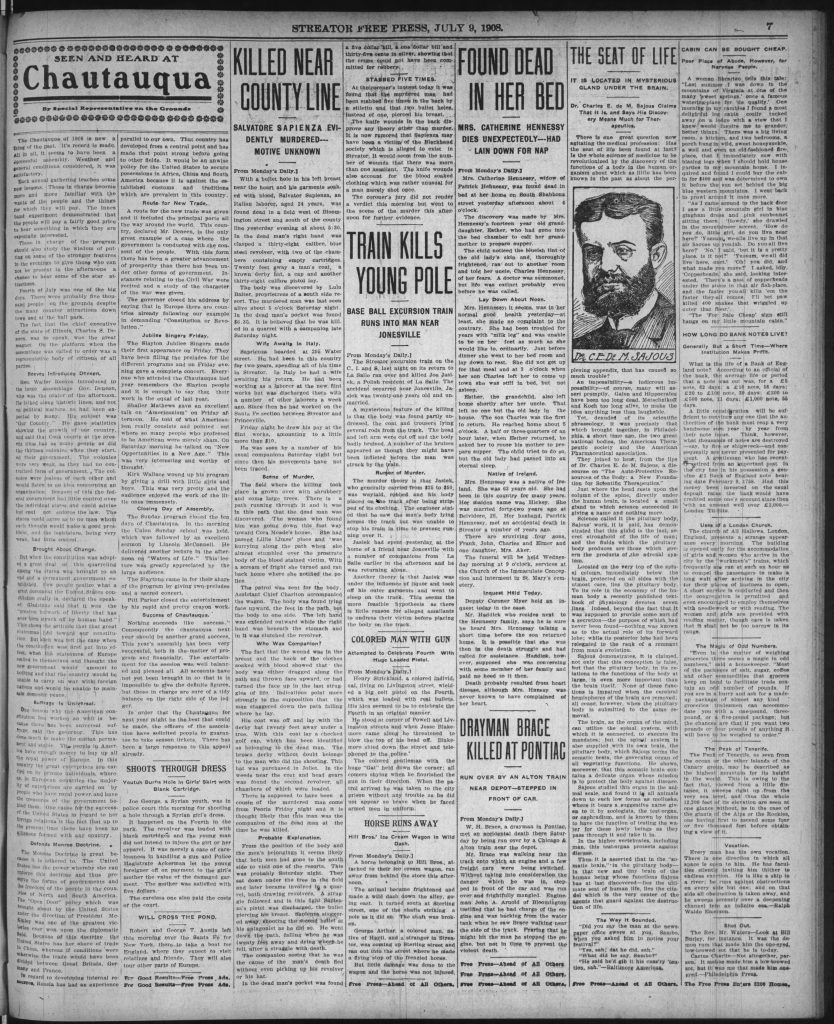
Comparing the article that originally appeared in the La Salle Post with the one from the Streator Free Press, I’m struck by how much more information the Streator Free Press reporter seemed to possess, especially considering that the Free Press article appeared one day before the article in the Post, and that Streator is 25 miles from the scene of the accident, while La Salle is only four miles distant. Furthermore, La Salle was the home of the victim—it seems to me the La Salle reporter should have had access to more sources, and better sources, than the Streator reporter. When I read the Free Press article again, however, I notice that much of its information is based on rumor, and also that much of what passes as information is merely innuendo.
In both 1900 and 1910, a majority of the La Salle County population was foreign-born or first-generation American. In Livingston County, by contrast, a majority of the population was native-born of native-parents. Streator straddles both counties, and [… fragment ends here]

Notes
1. All four quotations from Katherine Ott, Susan Tucker, and Patricia P. Buckler, “An Introduction to the History of Scrapbooks,” in The Scrapbook in American Life, ed. Susan Tucker, Katherine Ott, and Patricia P. Buckler (Philadelphia: Temple University Press, 2006), 16, 16, 2, 13.
2. Andie Tucher, Froth and Scum: Truth, Beauty, Goodness and the Ax Murder in America’s First Mass Medium (Chapel Hill: University of North Carolina Press, 1994), 25, 119.
3. Alan R. Myers, Directory of Coal Mines in Illinois: 7.5-Minute Quadrangle Series: La Salle Quadrangle: La Salle County (Champaign, Ill.: Illinois State Geological Survey, 2007), 9.
4. Scott Derks, “Selected Prices 1905-1909,” The Value of a Dollar: Prices and Incomes in the United States, 1860-2009, 4th ed. (Amenia, N.Y.: Grey House Publishing, 2009), 81-98.
5. Thomas R. Pegram, Battling Demon Rum: The Struggle for a Dry America, 1800-1933 (Chicago: Ivan R. Dee, 1998).
Clipping 1 is actually from the Bureau County Tribune (Princeton, IL), July 10, 1908, digitized by University of Illinois Library https://idnc.library.illinois.edu/?a=d&d=BCT19080710.1.6 .
Detail from the 1911 Sanborn Fire Insurance Map for Oglesby, digitized by University of Illinois Library: https://digital.library.illinois.edu/items/cb9085a0-c451-0133-1d17-0050569601ca-9